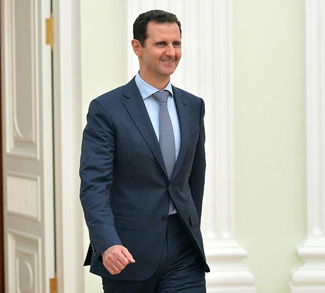Summary
Secretary of State Hillary Clinton’s recent trip to Asia suggests that Sino-American relations during the Obama administration will be characterized by a move to ignore the thornier issues of Taiwan and human rights in an effort to achieve closer co-operation in the economic, military, and environmental fields.
Analysis
The Sino-American relationship can be viewed as spheres of mutual and conflicting interests. Classically, economic matters have been an area of mutual interest, while certain political and security issues have been areas of conflicting interests, in particular human rights.
International human rights organizations were hoping Secretary of State Clinton’s visit would lead to a repeat of her 1995 pro-human rights speech at the UN Women’s Conference in Beijing. This speech so angered the Chinese authorities that they cut the live television feed mid-broadcast. To deflate current expectations, Mrs. Clinton told reporters that human rights, Tibet, and Taiwan could not be allowed to interfere with broader co-operation between China and the United States. While it was easier to criticize Chinese human rights in the semi-official capacity of first lady, Mrs. Clinton’s new stance suggests that the State Department has questioned the utility of publicly criticizing human rights in a culture where the concept of saving face is paramount.
The Taiwan problem is harder to ignore. An October 2008 arms sale between Taiwan and Washington, a deal that included Patriot Anti-Ballistic Missiles, resulted in Beijing cancelling high-level military and non-proliferation exchanges with Washington. President Obama has also indicated that he will continue to honor the Taiwan Relations Act, a law that essentially mandates future military sales to Taiwan.
Fortunately, a recent Sino-Taiwanese thaw bodes well for averting conflict in the short term. Taiwanese President Ma Ying Jeou has made improved ties with the mainland the cornerstone of his government. As such, a new Washington-Taipei arms deal will not be forthcoming in the immediate future.
Economic co-operation between China and the United States is, as Mrs. Clinton describes, imperative. China is the biggest foreign holder of U.S Treasury securities. While this ostensibly gives China economic leverage over the States, it is a ‘nuclear option’ insofar that any sudden sell-off would in turn devalue the remainder of China’s holdings. Mrs. Clinton chose to avoid raising concerns over the valuation of the Chinese yuan, instead taking a more agreeable route by praising the Chinese government’s continued confidence in U.S Treasury securities. Given the level of integration between the two economies, both parties will proceed carefully. Neither can afford to allow a disagreement on protectionism or currency valuation to spin into a mutually ruinous trade war.
Cultivating Sino-American co-operation on climate change was another central feature of Mrs. Clinton’s visit. Getting China to accept hard emission caps at the 2009 UN Copenhagen Climate Conference will be no easy feat. China’s longstanding stance on climate change is that it will not accept hard caps on emissions. Beijing argues that it should be allowed the same uninhibited period of economic development that America and Europe experienced. Even though China is now the world’s top carbon emitter, it will be exceedingly difficult to push through an agreement on hard caps without America making similarly difficult sacrifices.
Matters of international security are increasingly demanding closer Sino-American co-operation. China is Washington’s only hope in leveraging pressure on North Korea. In public, Mrs. Clinton stressed the need for China and America to re-invigorate six-party talks on North Korea’s nuclear program. Behind closed doors, she likely requested that Beijing apply pressure on Pyongyang to come back to the table.
On February 21, the Chinese Defense Ministry announced the reinstitution of high-level military exchanges. As Chinese military power in the region increases, these exchanges become increasingly important. China will be entering two conventionally powered aircraft carriers into service in 2015, with two nuclear powered ones to follow. The resulting expansion of China’s naval defense perimeter will encroach on America’s naval presence in the Pacific Ocean. To avoid confrontations stemming from overlapping defense responsibilities, both sides have already begun working on a naval pact that will help clarify the “rules of the road.”
Zachary Fillingham is a contributor to Geopoliticalmonitor.com



